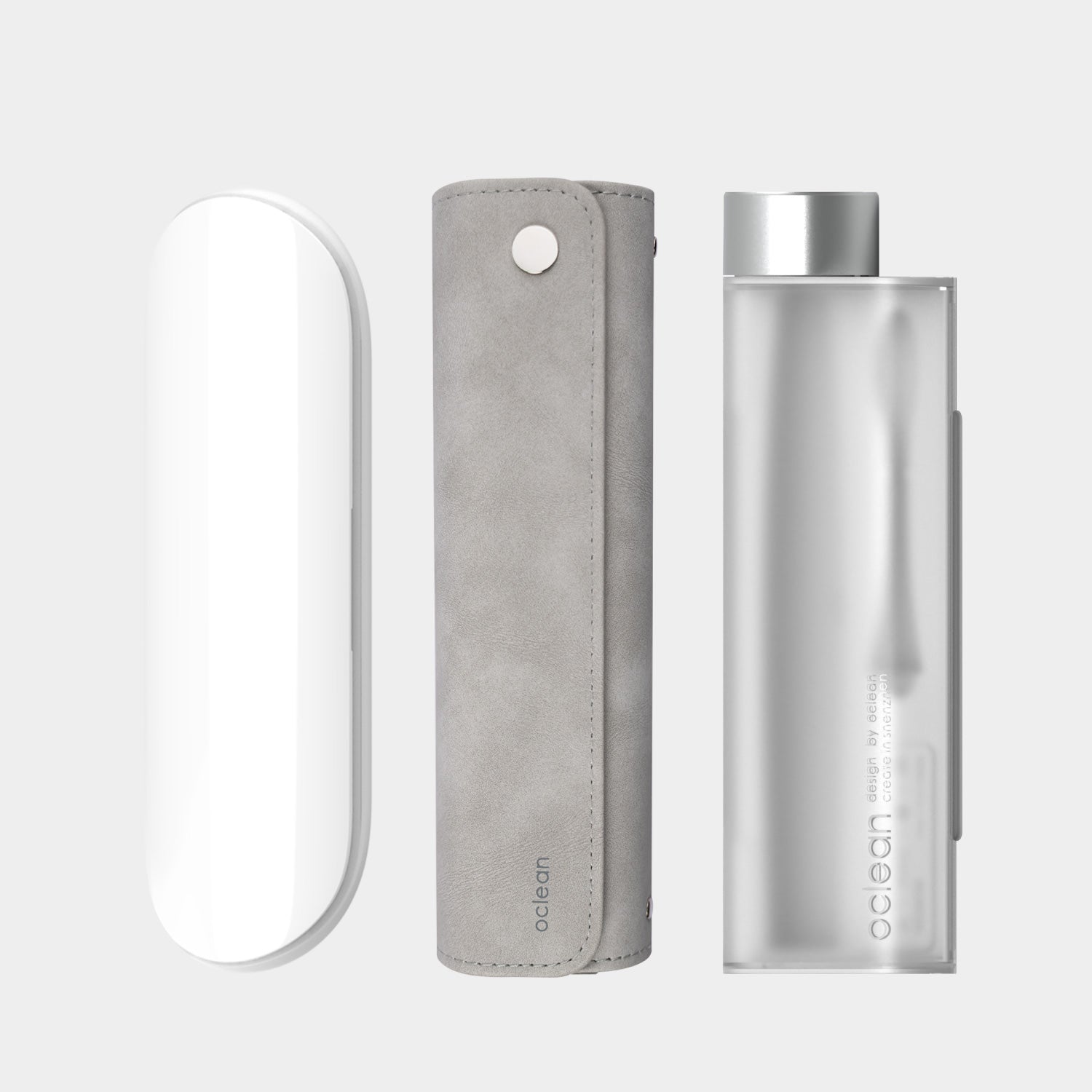Dec 8, 2021
Team Electric or Manual Toothbrush?

Is An Electric Toothbrush Necessarily Better Than a Manual Toothbrush?
Most studies demonstrate that electric toothbrushes clean more effectively than manual toothbrushes. So should everyone just throw away their manual toothbrushes? The answer might vary as a vast majority of people have benefited from traditional manual toothbrushes.
Electric even sonic toothbrushes have built-in features that make oral care at home more intuitive:
Brush teeth and gums at least twice a day. If you can, brush 30 seconds to 1 minute after every meal. Brushing removes plaque, a film of bacteria that clings to teeth. When bacteria in plaque come into contact with food, they produce acids. These acids lead to cavities. To brush:
1. Auto-timers to remind you how long to brush each zone of your teeth.
2. Pressure sensors & indicators- preventing you from brushing too aggressively, over-brushing can be very damaging to teeth and lead to recession and sensitivity
3. Maglev motor to deliver the cleaning efficiency removing plaque and tarter which is quite impossible for manual one to match.4. Quality Bristles-Color Indicators: Tell you when to replace the head of the brush and allow for different bristle designs for different parts of your mouth.

The key to healthy teeth and gums, in addition to your regular dental checkups and following a nutritious diet, is good oral hygiene. It’s recommended to brush your teeth for two minutes, twice a day, floss once per day. Believe it or not, both manual and electric toothbrushes can thoroughly clean your teeth. However, if you experience difficulty using a manual toothbrush due to health issues, you may find a powered one easier to use.
To prevent and slow down periodontal disease damage, studies show that soft head toothbrushes are more effective. In one study, for example, individuals who used a soft toothbrush had less exposed tooth below the gum line, while hard brush users had more damage to their gums. A powered toothbrush is easier to use, allowing people to brush regularly. Overall, however, there is no significant difference between powered and manual toothbrushes in preventing gum disease. It’s proper brushing, flossing, and annual dental cleanings that may prevent tooth and gum damage. Even advanced periodontitis can be slowed down with proper care. This is why finding a toothbrush that feels more convenient for you is important in maintaining a healthy smile.

Maintaining good oral hygiene is a challenge during ortho treatment. The reason? Brackets and arch-wires often trap food particles, making it extremely important to brush your teeth thoroughly and frequently. However, the horizontal arch-wires tend to obstruct the normal path of the bristle. Here is where an electric water flosser/ oral irrigator comes to the rescue which will significantly improve plaque levels and gingival bleeding because it can loosen and remove trapped food helping keep teeth and gums clean. The toothbrush and floss combo will be of great assistance. For best results, guide the brush to all parts of your mouth to reach each tooth.
Getting your kids to brush his or her teeth can be a challenge. This is why it is important to pick a toothbrush that will boost your child’s interest in regular brushing. It’s necessary to brush for two minutes, twice a day! A brush head with soft rounded-end bristles, a child-sized brush head, and a handle are recommended. Choosing a toothbrush that plays music may not be a bad idea. Brushing your teeth should be a fun activity, so if your child wants a glow-in-the-dark, music-playing toothbrush, then just go for it as long as it triggers interest and makes brushing fun.
In all, electric or manual toothbrushes can both be of great assistance when combined with suitable brush heads, bristles, and brushing techniques. However, when it comes to efficiency, technical functions, or even ease of use, then electric ones shall prevail.













































































